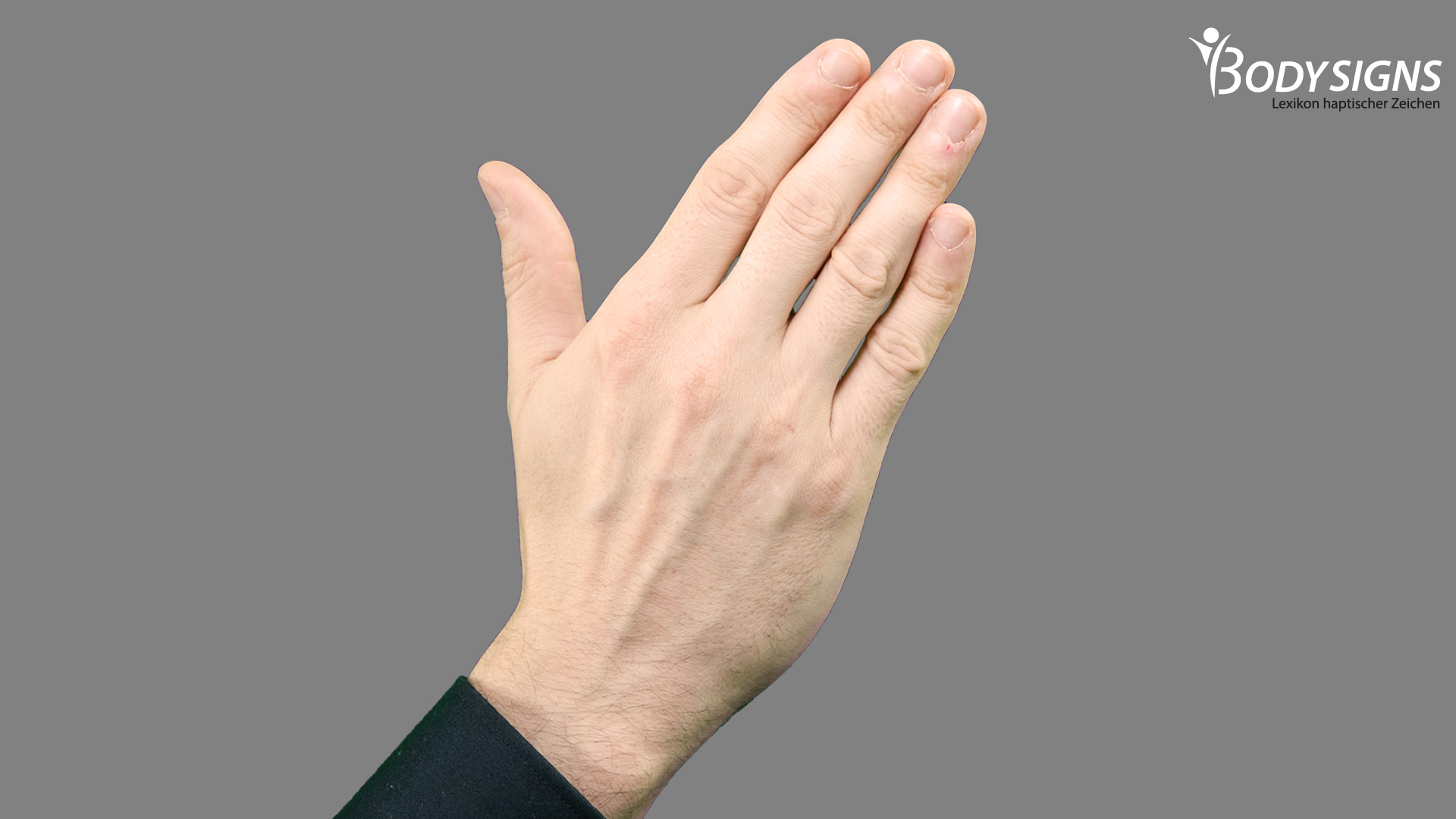-
Sequence of movement
The hand is formed into a loosely bent flat hand. If the assistant is standing on the left side behind the person being addressed, he or she places his or her right hand, formed in this way, on the outer left shoulder blade in such a way that the back of the hand or the back of the fingers is loosely placed there. In a flowing horizontal movement, the assistant now pulls the hand over to the right shoulder blade and simultaneously changes sides. At the end of the movement, the assistant stands on the right side behind the deafblind person. If the assistant is standing on the right side behind the person being addressed, he/she places his/her left hand on the outer right shoulder blade in such a way that the back of the hand or the back of the fingers is loosely placed there. In a flowing horizontal movement, the assistant now pulls the hand over to the left shoulder blade and simultaneously changes sides. At the end of the movement, the assistant stands behind the deafblind person on the left.
Shape of hand
Area of use
Germany
-
Sequence of movement
The hand is formed into a loose flat hand. If the assistant is standing behind the person being addressed, he or she places his or her hand on the back of the upper arm of the person being addressed. In a flowing horizontal movement, the assistant now pulls the hand forward over the upper arm and simultaneously changes sides. At the end of the movement, the assistant stands in front of the deafblind person. If the assistant is already standing in front of the person being addressed at the beginning, he/she places his/her flat hand on the front area of the upper arm. In a flowing horizontal movement, the assistant now pulls the hand back over the upper arm and simultaneously changes sides. At the end of the movement, the assistant stands behind the deafblind person.
Shape of hand
Area of use
Germany
